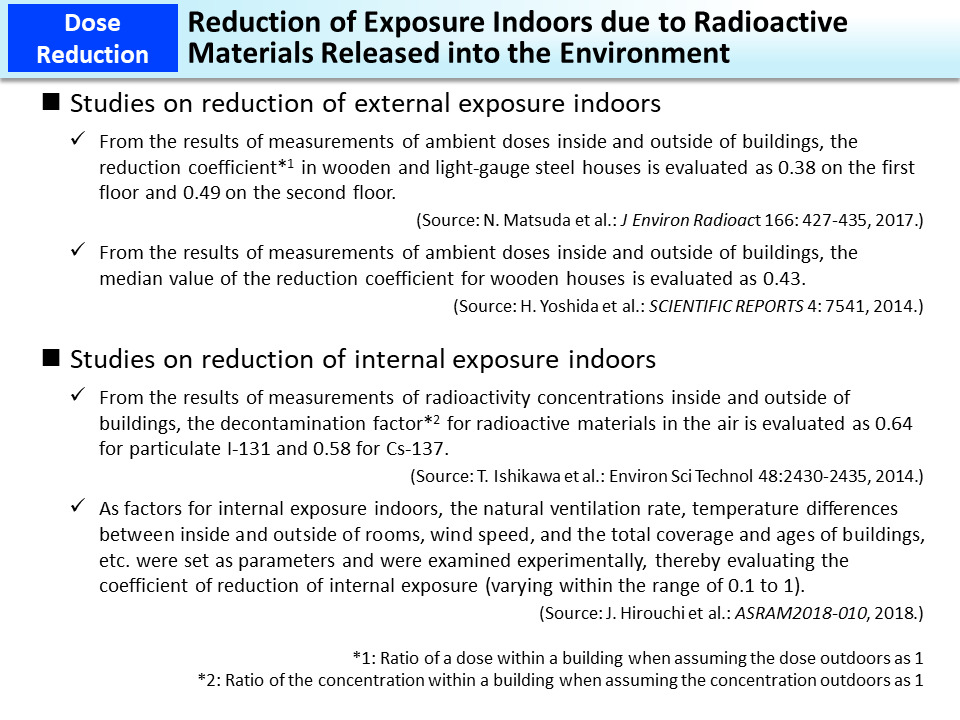Reduction of Exposure Indoors due to Radioactive Materials Released into the Environment
When being indoors, radiation from radioactive materials released into the environment that are suspended in outdoor air or deposited on the ground surface, etc. is shielded by the building and the external exposure dose decreases. Additionally, the concentration of radioactive materials suspended in indoor air is lower than that outdoors thanks to the airtightness of the building, and the internal exposure dose through inhalation also decreases.
The value, 0.4, which is used as the coefficient of reduction of external exposure for typical Japanese wooden houses when considering radiological protection, is said to be based on the IAEA-TECDOC-225 (1979) (p.53 of Vol. 1, “Shielding and Reduction Coefficient”). As recent studies on the reduction of exposure indoors, the outcomes of studies concerning the coefficient of reduction of external exposure1,2 are reported.
Additionally, as the effects of reducing internal exposure indoors, not only external exposure, the outcomes of studies concerning the effects of reducing radioactivity concentrations3 and the coefficient of reduction of internal exposure4 are also reported. It is reported that the effects of reducing internal exposure indoors vary by individual buildings' ages, wind speed, temperature differences between inside and outside of rooms, and other factors.
- N. Matsuda et al.: J Environ Radioact 166: 427-435, 2017.
- H. Yoshida et al.: SCIENTIFIC REPORTS 4: 7541, 2014.
- T. Ishikawa et al.: Environ Sci Technol 48:2430-2435, 2014.
- J. Hirouchi et al.: ASRAM2018-010, 2018.
- Included in this reference material on March 31, 2023

